Taiwan Taoyuan International Airport and Japan’s Aso Kumamoto Airport yesterday became sister airports following the signing of a memorandum of understanding (MOU) between the two airport operators in Taipei.
The MOU was signed by Taoyuan International Airport Corp (TIAC) chairman Yang Wei-fuu (楊偉甫) and Kyushu Kumamoto International Airport Co president Hideaki Yamakawa, making the Japanese airport the Taoyuan airport’s 15th sister airport.
“The signing of the MOU is an important milestone that would deepen Taiwan and Japan’s cooperation in economics, trade and culture,” Yang said.

Photo courtesy of Taiwan Taoyuan International Airport
Taiwan Semiconductor Manufacturing Co’s (TSMC) investment in a new fab in Kumamoto has created greater demand for air transportation between the two hubs, with passenger traffic increasing more than threefold from about 45,000 people last year to more than 140,000 in the first nine months of this year, he said.
The upsurge in passenger traffic has brought about more collaboration opportunities between the two airports, Yang said, thanking officials from the Japanese airport for visiting Taiwan and proposing the signing of an MOU.
The MOU marks a starting point for Taiwan and Japan to broaden and bolster cooperation in the high-tech industry, he said.
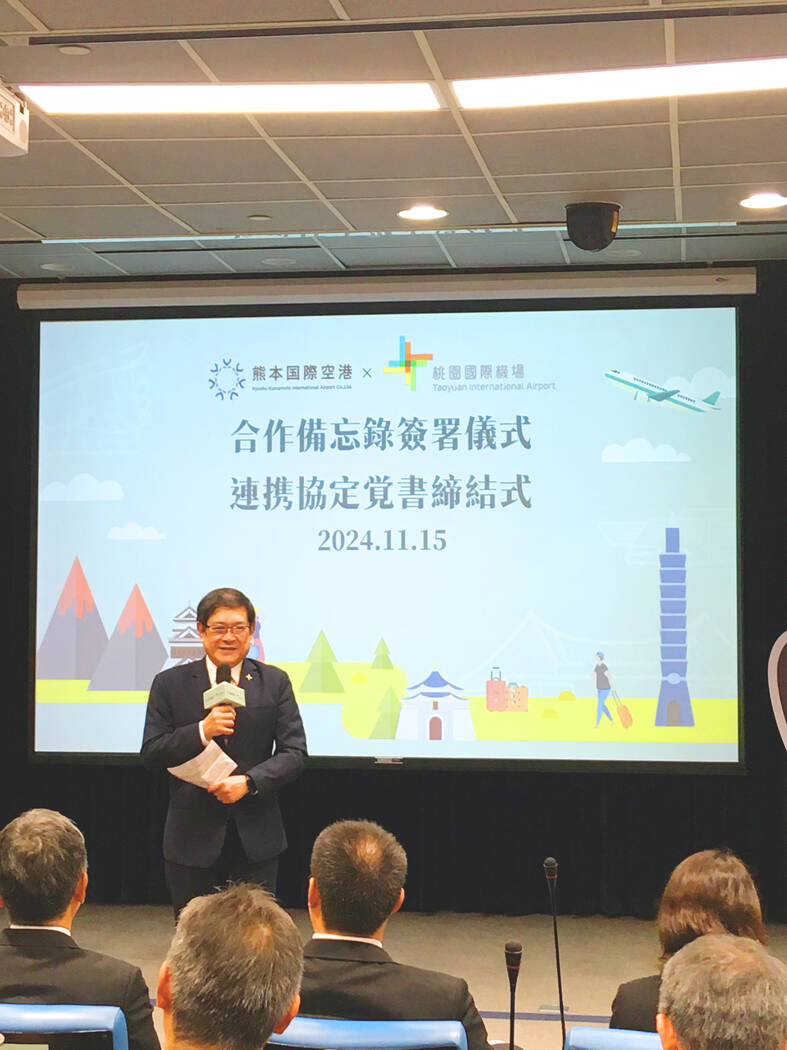
Photo courtesy of Taiwan Taoyuan International Airport
TIAC has upgraded its airport facilities and services in line with customer needs and expects to learn from its exchanges with Aso Kumamoto Airport, Yang said.
Yamakawa said he was happy to participate in the signing ceremony, thanking Yang, Ministry of Transportation and Communications Department of Navigation and Aviation Director Han Chen-hua (韓振華), Kumamoto Prefectural Government Department of Planning and Development Director Yoshiyuki Tominaga, and other guests and staff.
Aso Kumamoto Airport is dedicated to building itself into the gateway for the world to Kumamoto, he said.
A new terminal at the airport started operating in March, with a section designed for passenger service and another one for commercial activities to provide more convenient services for tourists and business travelers, Yamakawa said.
The MOU would facilitate Aso Kumamoto Airport’s efforts in developing local economies, tourism and cultures, he said, expecting the ties and cooperation between the two airports to evolve into exchanges between governments, industries and companies of both sides.
Han said the signing of the MOU symbolizes deeper ties between Taiwan and Japan in terms of tourism, airline services, economics and trade.
Japan is the top travel destination for Taiwanese, with more than 4 million Taiwanese visiting Japan in the first eight months of this year, he said.
From January to last month, more than 1 million Japanese visited Taiwan, a nearly 50 percent increase from last year, Han said.
The number of flights between Taiwan and Japan has increased to 773 per week, surpassing the previous record of 709 flights before the COVID-19 pandemic, he said, adding that there are at least 12 weekly flights between Taoyuan and Kumamoto.
The MOU is expected to increase exchanges of experience in airport services, operations and management between the two airports, Han said, adding that it is Taoyuan International Airport’s first MOU with a Kyushu airport and the fourth with a Japanese airport.
Tominaga expressed his appreciation for Taiwan providing aid to Kumamoto after an earthquake in April 2016.
Aso Kumamoto Airport is representative of the prefecture’s resilience in bouncing back from the quake, he said.
Exchanges between Taiwan and Japan thrived following TSMC’s decision to set up a fab in Kumamoto in 2021 and have extended from economics to culture, he said.
Aso Kumamoto Airport resumed scheduled flights between Kumamoto and Taoyuan in September last year, which are provided by China Airlines and Starlux Airlines, Tominaga said, adding that more than 180,000 passengers from Taiwan had used these flights.
The signing of the MOU would benefit Kumamoto and open doors to more collaborative opportunities between two sides, he said, adding that the Kumamoto Prefectural Government would do its best to help both airports prosper and develop.
(Taoyuan International Airport special report)
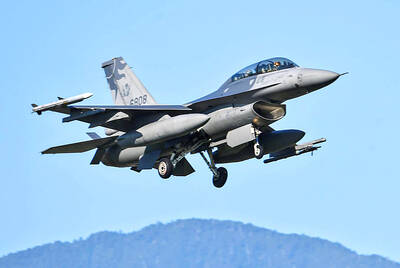
The first two F-16V Bock 70 jets purchased from the US are expected to arrive in Taiwan around Double Ten National Day, which is on Oct. 10, a military source said yesterday. Of the 66 F-16V Block 70 jets purchased from the US, the first completed production in March, the source said, adding that since then three jets have been produced per month. Although there were reports of engine defects, the issue has been resolved, they said. After the jets arrive in Taiwan, they must first pass testing by the air force before they would officially become Taiwan’s property, they said. The air force
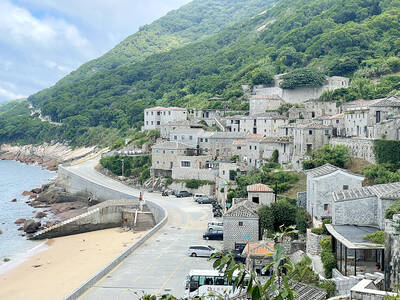
GLOBAL: Although Matsu has limited capacity for large numbers of domestic tourists, it would be a great high-end destination for international travelers, an official said Lienchiang County’s (Matsu) unique landscape and Cold War history give it great potential to be marketed as a destination for international travelers, Tourism Administration Director General Chen Yu-hsiu (陳玉秀) said at the weekend. Tourism officials traveled to the outlying island for the Matsu Biennial, an art festival that started on Friday to celebrate Matsu’s culture, history and landscape. Travelers to Matsu, which lies about 190km northwest of Taipei, must fly or take the state-run New Taima passenger ship. However, flights are often canceled during fog season from April to June. Chen spoke about her vision to promote Matsu as a tourist attraction in
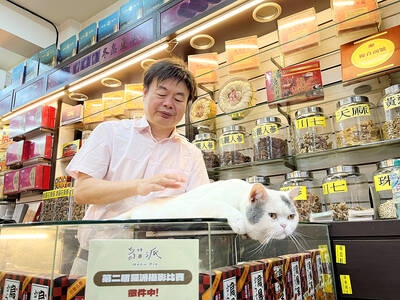
PAWSITIVE IMPACT: A shop owner said that while he adopted cats to take care of rodents, they have also attracted younger visitors who also buy his dried goods In Taipei’s Dadaocheng (大稻埕), cats lounging in shops along Dihua Street do more than nap amid the scent of dried seafood. Many have become beloved fixtures who double as photography models, attracting visitors and helping boost sales in one of the capital’s most historic quarters. A recent photo contest featuring more than a dozen shop cats drew more than 2,200 submissions, turning everyday cat-spotting into a friendly competition that attracted amateur and professional photographers. “It’s rare to see cats standing, so when it suddenly did, it felt like a lucky cat,” said Sabrina Hsu (徐淳蔚), who won the NT$10,000 top prize in
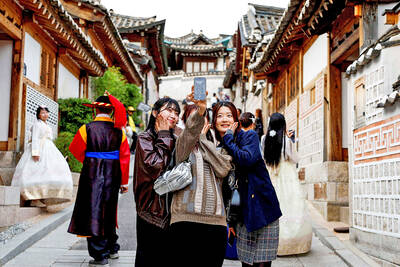
STRIKE: Some travel agencies in Taiwan said that they were aware of the situation in South Korea, and that group tours to the country were proceeding as planned A planned strike by airport personnel in South Korea has not affected group tours to the country from Taiwan, travel agencies said yesterday. They added that they were closely monitoring the situation. Personnel at 15 airports, including Seoul’s Incheon and Gimpo airports, are to go on strike. They announced at a news conference on Tuesday that the strike would begin on Friday next week and continue until the Mid-Autumn Festival next month. Some travel agencies in Taiwan, including Cola Tour, Lion Travel, SET Tour and ezTravel, said that they were aware of the situation in South Korea, and that group